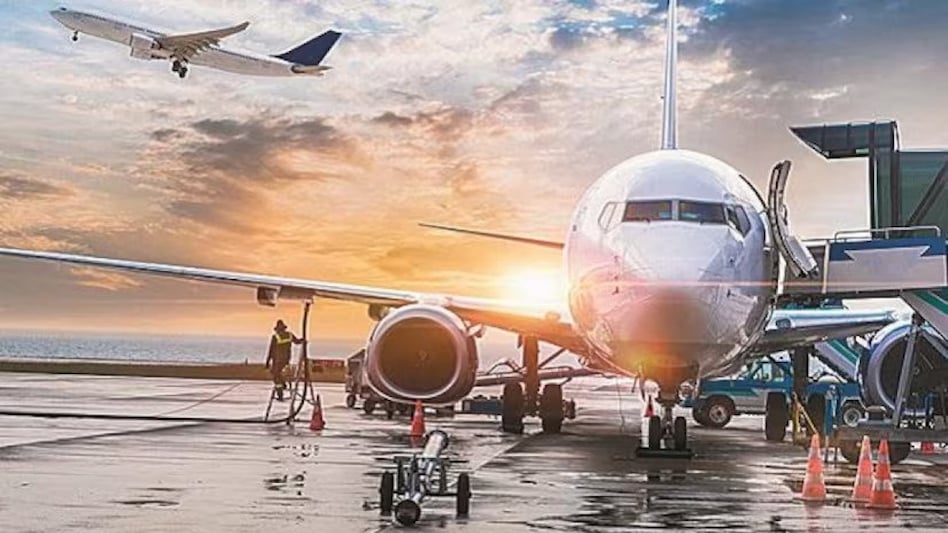 The total jet fuel and kerosene demand in the country would only recover to the 2019 level by 2025
The total jet fuel and kerosene demand in the country would only recover to the 2019 level by 2025  The total jet fuel and kerosene demand in the country would only recover to the 2019 level by 2025
The total jet fuel and kerosene demand in the country would only recover to the 2019 level by 2025 It’s a trend that has brought together passengers travelling in pressurised aircraft cabins and housewives working in millions of Indian kitchens to the same table.
Even as demand for air travel measured by flights has returned to the pre-pandemic level in the world’s fastest-growing aviation market, the jet fuel demand was expected to remain below the 2019 level due to a slower rebound in long-haul air travel, in an industry still recovering from the impact of Covid-19 pandemic as well as higher fuel prices, an analyst with data, research and analytics firm S&P has said.
Led by a surge during the summer travel season, the country’s total domestic flights averaged 88,400 per month for the period of January-June 2023, which was about 2.5 per cent higher relative to 2019. An even higher recovery was seen in international flights, with total flights averaging 14,000 per month for the first six months of 2023 vs 12,500 per month in 2019, as per data gathered from the aviation regulator the Directorate General of Civil Aviation (DGCA).
“Further analysis of data provided by DGCA shows that although the number of flights has returned to 2019 level, the distance travelled by them is yet to recover. This means that flights are now shorter than before, as long-haul routes are slower to recover,” said Himi Srivastava, Analyst of South Asia Oil Markets at S&P Global Commodity Insights.
For instance, during the January-June period, average kilometres travelled per month were 79.5 million against 79.6 million in 2019 for the domestic segment. However, the numbers trail significantly for the international segment, from per month average of 45.6 million in 2019 down to 43.8 million in 2023.
“The lack of recovery of longer flights accounting for lower kilometres travelled is one of the main reasons pulling back jet fuel demand as jet fuel demand is highly correlated to distance travelled by flights,” added Srivastava.
S&P also sees a strong recovery in passenger footfalls in both domestic and international segments. DGCA data suggests an average growth of 8 per cent in domestic passenger footfall for the January-June period of 2023 over 2019, while in the international segment, passenger footfall rose 13 per cent for the same period. Pent-up demand for international travel is seen boosting numbers as long-awaited routes open.
Sustained growth to recovery
With the recovery in Jet fuel demand being a key theme in 2023 and 2024 globally, S&P Global Commodity Insights estimates India’s jet fuel demand to remain slightly below the pre-pandemic level in 2023 and to fully recover by the first quarter of 2024, assuming that growth remains constant.
However, an underlying vulnerability to global economic recession and a surge in fuel prices or a weakening in discretionary income and hiring may again result in lower load factors, curtailment of flights and reduced fuel consumption.
Refined kerosene is an important component in different jet fuel varieties.
In parallel with jet fuel demand, residential kerosene demand has significantly dropped in the past three years due to a push by the government to switch to cleaner fuels and would continue to decline.
In March, an additional 95.9 million liquefied petroleum gas (LPG) connections were released under the government’s flagship Pradhan Mantri Ujjwala Yojana (PMUY) to provide poor households with clean cooking fuel. The active domestic LPG consumers increased from 145.2 million in April 2014 to 313.6 million in the same period.
Consequently, the total jet fuel and kerosene demand in the country would only recover to the 2019 level by 2025.
Also Read: Despite challenges, India's plans for energy sector are ambitious. It needs proper execution
Copyright©2023 Living Media India Limited. For reprint rights: Syndications Today